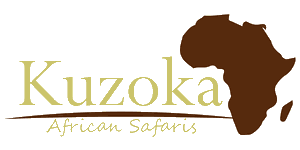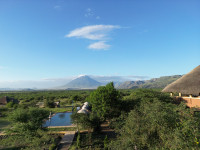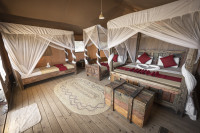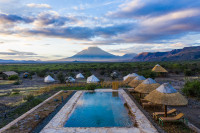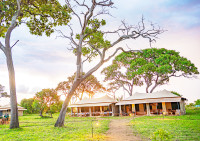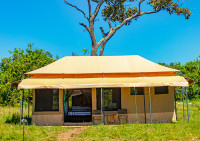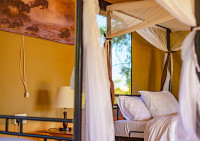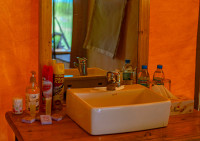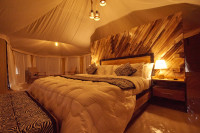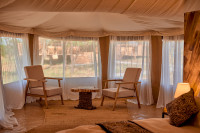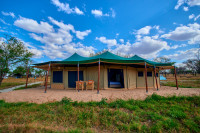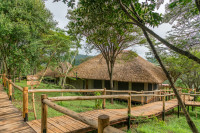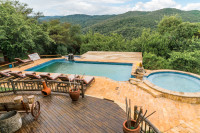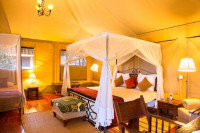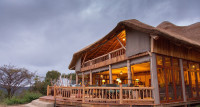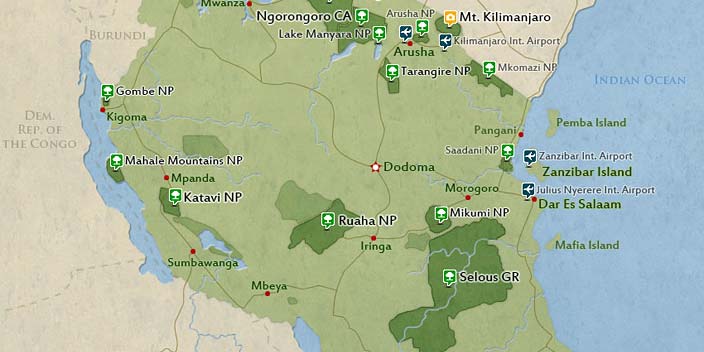
$2,090 pp (USD)
2 travelers on Start dateArrival
Arrival

Day 1
Lake Natron
Lake Natron
On this day, you will head to Lake Natron. Just past Mto wa Mbu, you will leave the asphalted road; along the East African Rift Valley, the drive continues on adventurous slopes. The drive leads past Maasai villages and the holy mountain of the Maasai, the Ol Doinyo Lengai. As soon as the Maasai village Ngare Sero comes into sight, it is not far from the lake. The outlet Lake Natron is the home of a remarkable variety of birds, in particular about 2.5 million dwarf flamingos; the lake serves them as a regular breeding ground. The water is strongly saline and the basis of life for unicellular algae and bacteria, which are responsible for the planar red-brown to purple-violet coloring of the lake. The area around Lake Natron is one of the most beautiful and unspoiled regions in Africa. You will make a hike to the lake and then you will visit the nearby waterfalls, a true oasis with awesome waters to swim.
- Main Destination:
- Lake Natron
- Accommodation:
- Africa Safari Lake Natron (Safari Luxury Glamping)
- Meals & Drinks:

Day 2
Northern Serengeti National Park
Northern Serengeti National Park
After an early breakfast, you'll head towards Northern Serengeti. On adventurous slopes, it goes up the Rift Valley into the wide plains of the Serengeti. It is the heart of a vast ecosystem, whose species-rich animal world is unique in the world. Annually, the great migration involves over 1.4 million gnus, almost 300,000 Thomson's gazelles, about 200,000 zebras, and several thousand topi's during the rainy seasons to the areas with the greener and lush meadows. With about 3 million larger mammals, the Serengeti is the national park with the richest wildlife worldwide. Around two-thirds make up the above-mentioned animal species, furthermore, the park is the home to many other animal species, such as giraffes, buffalos, hyenas, elephants, and crocodiles. Particularly large is the population of feline predators, about 3000 lions, a good 300 cheetahs, and an estimated 400-700 leopards have their hunting ground here.
- Main Destination:
- Northern Serengeti National Park
- Accommodation:
- Sero Tented Camps
- Meals & Drinks:

Day 3
Central Serengeti National Park
Central Serengeti National Park
The entire day is dedicated to wildlife viewing in the Serengeti. The areas that you visit will depend upon where the migrating herds are. Predators usually follow closely behind the trekking animals and include lions, leopards (in the acacia trees), and cheetahs. During the short rainy season in November and December, the herds move from the hills in the north to the plains in the south. During the longer rainy season from April to June, they return up north. As the migration is completely dependent on the yearly rainfalls, the location of the herds may vary from year to year but your guide will know where to locate the animals and where to see them best.
- Main Destination:
- Central Serengeti National Park
- Accommodation:
- Moyo Tented Camp
- Meals & Drinks:

Day 4
Ngorongoro Crater
Ngorongoro Crater
The game drive today is on adventurous roads about 600 meters into the crater. The crater has a diameter of 17 to 21 kilometers and is the home of many animals. Nearly all the biodiversity of the East African savannah has gathered here. It is only giraffes and a few other animal species for which the rock faces are too steep, that do not live in the crater. Depending on the season, 15,000 to 25,000 animals gather here. Of these, more than two-thirds are buffaloes, gnus, zebras, and gazelles. The number of grazers in the crater also explains why the largest density of predators in Africa can be found here.
Besides other predators, more than 100 lions live here in several prides. The chances of seeing the Big Five (lion, elephant, buffalo, rhino, and leopard) within just a few hours are particularly good. In the afternoon, you will ascend the steep crater walls and head to the lodge for dinner and an overnight stay.
- Main Destination:
- Ngorongoro Crater
- Accommodation:
- Ngorongoro Forest Tented Lodge
- Meals & Drinks:

Day 5
Tarangire National Park
Tarangire National Park
The park runs along the line of the Tarangire River and is mainly made up of low-lying hills on the Great Rift Valley floor. Its natural vegetation mainly consists of acacia woodland and giant African baobab trees, with huge swamp areas in the south. Both the river and the swamps act like a magnet for wild animals, during Tanzania’s dry season. The Tarangire National Park is reputed to contain some of the largest elephant herds in Africa. This African national park is also home to three rare species of animals — the greater Kudu, the fringed-eared oryx, as well as a few Ashy starlings. You'll eat lunch at a picnic after which you'll continue with the game drive until late evening. Then, you'll drive to Arusha/JRO.
- Main Destination:
- Tarangire National Park
- Accommodation:
- No accommodation (End of tour)
- Meals & Drinks:

